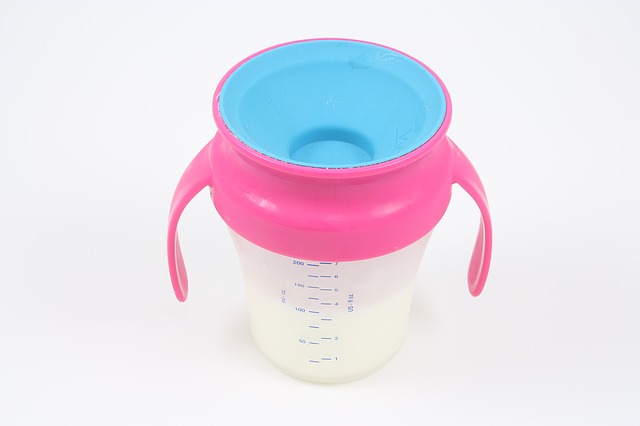Here Are The Best Tips for Ditching the Sippy Cup

You may appreciate the convenience of a sippy cup, what parent doesn’t? You don’t want your toddler to have a bottle anymore, but you don’t want leaks and spills all over your home, either.. So, is it important to transition to an open cup? Yes—and here are two key reasons.
First, according to speech pathologist and certified orofacial myologist Sandra Holtzman, sippy cups can cause speech problems with some children, ones similar to issues created by thumb sucking. Young children drink from sippy cups like bottles, tipping their necks back with the hard spout moving their tongue, and pushing out their teeth.

This segues to another, related problem: tooth decay. Decay on baby teeth can be a precursor to improper placement. Experts recommend when using a sippy cup, giving your child water instead of sugary drinks—meaning no sugared water, juice, or soft drinks.
Here are some tips to help you and your little one ditch the sippy cup for good.
Picking the Best Timing To Take Away The Sippy Cup
Maria Masters at WhatToExpect.com doesn’t list a hard and fast deadline but does note that most toddlers are ready to manage a regular cup by age two. If you wait for longer, you may get more resistance to the change. Some experts recommend a gradual transition to an open cup, starting at the age of nine months. If going this route, you can hold the cup for the baby and let them take sips.

SpeechSisters.com suggests this timeline:
- At six months, help your young child to experiment with an open cup.
- Between six and nine months, introduce a cup that comes with a straw.
- Between eight months and a year, use an advanced straw cup, one that requires your child to independently suck.
- Continue using both open cups and ones with straws throughout the transition from a bottle. Your child will become comfortable with using different types in a way that uses the right tongue placement and swallowing actions.
Selecting the Best Sippy Cup
Here’s another tip from WhatToExpect.com. Let your toddler choose their own cup. Children are more likely to accept a change when they feel a sense of control over the process. Praise your toddler when the cup is appropriately used.
Adding a Final Ingredient: Parental Patience
Until a toddler is two years old, BabyCenter.com shares, they probably won’t have enough dexterity to use regular cups well. It’s easy for an adult to forget how many intricate steps are involved from picking up the cup to staying steady as it’s lifted. Then the toddler needs to take in just the right amount of fluid to quench thirst without spilling and then place the cup back on the high chair or table.
So, be patient as your child practices. Toddlers progress from a sippy cup to a regular cup at different timelines, so don’t compare your toddler to another child, whether one of your own or a friend’s toddler. Just keep moving forward and, as always, ask your pediatrician for further advice.






